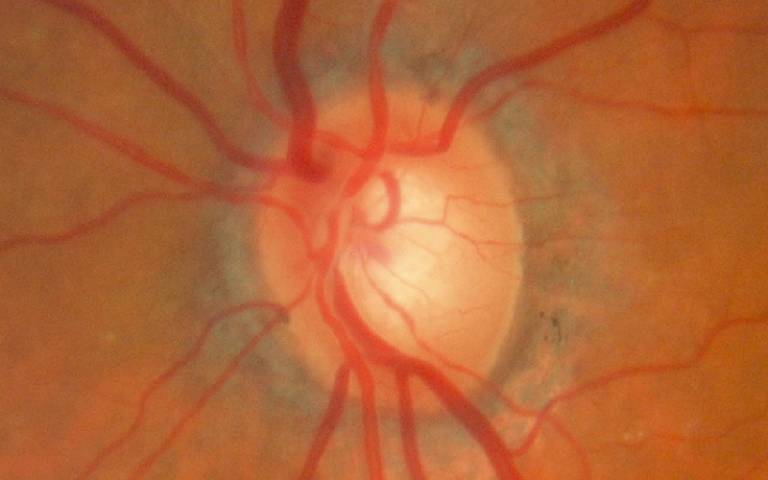Laser-based treatment successful and cost-effective for glaucoma
11 March 2019
Using a laser-based treatment on newly diagnosed cases of glaucoma is more successful and cost-effective than standard treatments, finds a new UCL and Moorfields Eye Hospital NHS Foundation Trust study.

The three-year trial, which is the largest ever of its kind, saw 718 patients newly-diagnosed with glaucoma or ocular hypertension (an increase in pressure in the eye without causing damage to the optic nerve) assigned one of two treatment pathways.
One pathway was the current standard treatment of administering eye drops designed to lower intraocular pressure. The other involved a treatment called Selective laser trabeculoplasty (SLT), an extremely quick procedure which lowers intraocular pressure by using lasers to make it easier for fluid to leave the eye.
The results, published in the The Lancet, showed that patients who received SLT were more regularly at the target intraocular pressure. There was less need for treatment to be escalated and there was a reduced need for both glaucoma surgery and cataract extractions compared to patients who received the eye drops.
“In this study, we have shown that a simple, safe, pain-free laser treatment not only works better than eye-drops at preventing glaucoma from deteriorating but also costs the NHS less,” said Mr Gus Gazzard (UCL Institute of Ophthalmology and Moorfields Eye Hospital).
“These results strongly suggest that laser should be the first treatment for glaucoma in all newly diagnosed patients and will provoke further interest in its use in patients who are already on treatment. In the results so far we’ve already seen eye pressure lowering that has lasted far longer than the older early data had suggested, so we’re excited by the prospect of seeing very long-term pressure control given that glaucoma is a long-term, chronic disease.”
The results could potentially improve the way glaucoma is treated across the world and could save the NHS up to £1.5million per year in direct treatment costs for newly diagnosed patients.
If the treatment proves to be as effective with previously diagnosed patients, cost savings could be up to £250million per year.
The trial, which was predominantly funded by the National Institute for Health Research Health and Technology Assessment Programme (NIHR HTA), was held across the NIHR Biomedical Research Facility (BRC) at Moorfields and UCL and with the support of the PRIMENT clinical trials unit at UCL.
An ongoing follow up study, also funded by the NIHR HTA alongside Moorfields Eye Charity, Fight for Sight, and the International Glaucoma Association, will provide more information on the long term effects. This follow-up study is due to conclude in 2020.
Professor Sir Peng Tee Khaw, director of the NIHR Biomedical Research Centre at Moorfields Eye Hospital and UCL Institute of Ophthalmology, said: “This ground-breaking research into eye diseases will lead to significant benefits for many patients in the UK and around the world.”
“Glaucoma is increasing with our ageing population and it has a huge impact on many lives and is increasing the demand for clinical services in the UK. The NIHR supports research that looks at methods of improving treatment and promoting better quality of life and convenience for patients.”
Karen Osborn, chief executive at International Glaucoma Association, said: “We were delighted to support this project and we’re really excited by the findings. Many of our members struggle with eye drops for a whole variety of reasons, and anything that extends the range of viable treatment options will make a huge difference.”
Dr Neil Ebenezer, director of research, policy and innovation at Fight for Sight, said: “Selective Laser Trabeculoplasty potentially has far reaching benefits for patients with glaucoma. This study highlights the importance of funding research that provides an evidence base on the relative effectiveness of different treatments for glaucoma. The results of this study could change the way that glaucoma patients are treated worldwide.”
Links
- Research paper in The Lancet
- Mr Gus Gazzard's academic profile
- UCL Institute of Ophthalmology
- UCL Brain Sciences
Source
Image
- Optic nerve with glaucoma (Source: Flickr, Credit: Heiko Philippin / Community Eye Health)
Media contact
Chris Lane
tel: +44 20 7679 9222
E: chris.lane [at] ucl.ac.uk
 Close
Close

